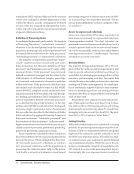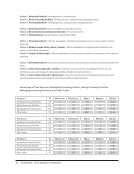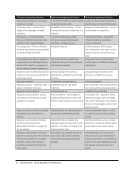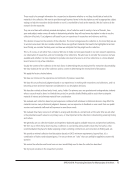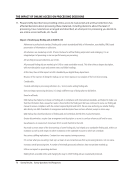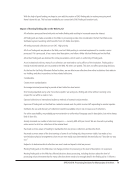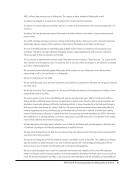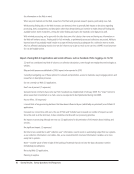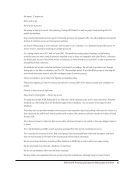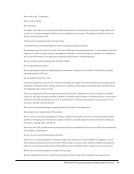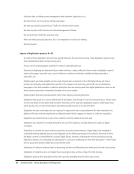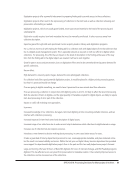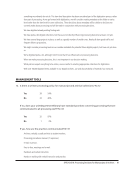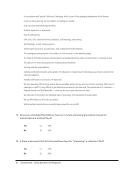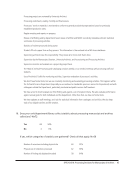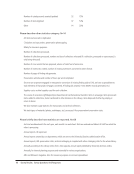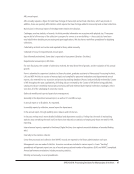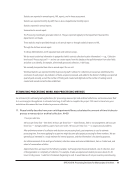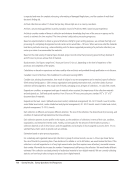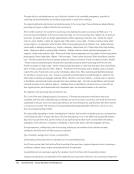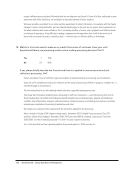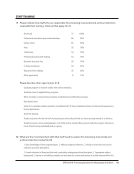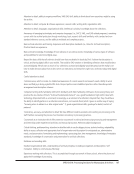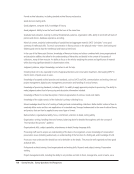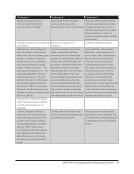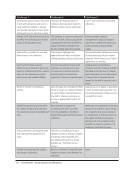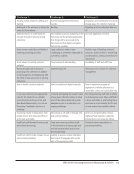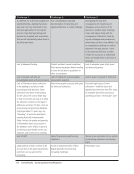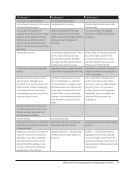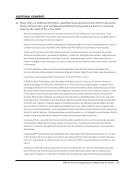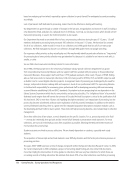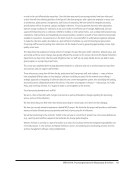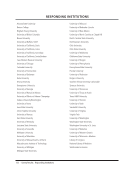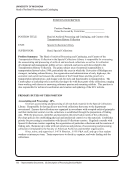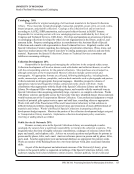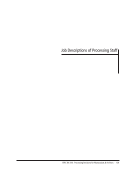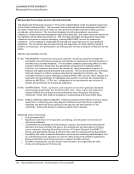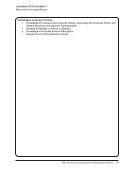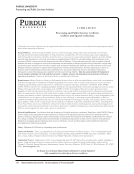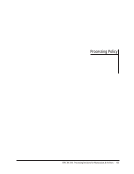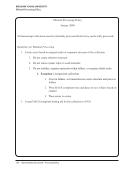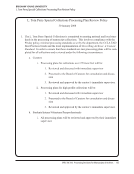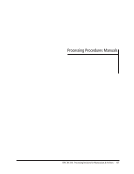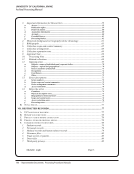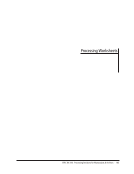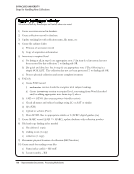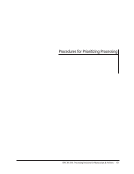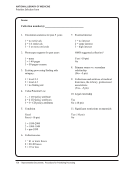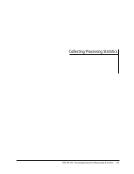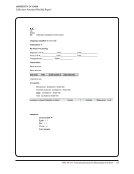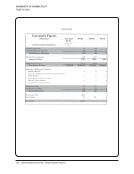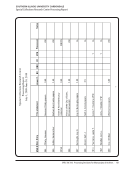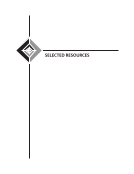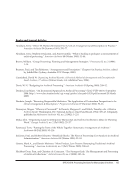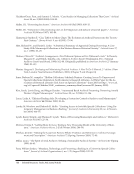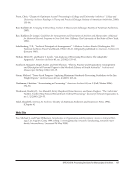80 · Survey Results: Survey Questions And Responses
potential researcher of the precise content of a collection 2) aid the researcher in requesting specific items and 3) aid
staff in the identification of requested items and in the management of reproduction rights.
I cannot think of any processing decisions that have been influenced by our provision of online access.
I don’t really think this affects processing priorities unless we receive additions to a collection already described online.
Increased donor demand to find their collections via Google. One factor for recent policy to catalog accessions as end-
of-year activity. During my tenure we’ve always published truncated accession records to the Web twice a year.
Increased specificity of reference inquiries. Increased publicity, and therefore use by spectrum of researchers, of
materials available.
Increased visibility and use of collections.
Influenced our decision to adopt DACS. Finding aids are placed online after being tagged in EAD.
Key-word searching has to a degree allowed us greater freedom in leaving collections described at the summary
description level as long as proper key words and names are included in the finding aid or the metadata fields.
Migrating collection descriptions from paper to HTML has been the single most important factor in increasing visibility
and use of our collections. At our institution, HTML finding aids came first, and then EAD versions in a union database.
More access.
Mounting finding aids on the Web results in a greater volume of e-mail reference queries, many of them in the
“nuisance” category.
Nil.
No change in processing levels or details of description. Some adjustments in keying in needed data.
No impact on decisions as we go forward. In some units we’ll need to prioritize the order in which we convert old paper
finding aids to Web based.
No significant impact on processing decisions.
Obviously the more we put up, the more people want, so that creates pressure to do more.
Our finding aids are on a consortial site, which is great for access, keeping Kentucky-related materials together, and
outreach. The pages are not currently crawled by Google which severely reduces the possibility of discovery.
Part of the processing workflow—has provided more immediate feedback from researchers and donors, especially with
corrections and increase in use of materials.
Pilot project encoding Special Collections finding aids using OhioLink EAD template running 2008–2011 impact
assessed upon completion.
Protecting privacy by not revealing certain information in the finding aid. Reformatting of folder headings so that each
can be separately interpreted when it stands alone in a search hit list or other display separated from the surrounding
headings.
Providing access to finding aids for partially processed fonds/collections has resulted in increased demand for access to
the unprocessed components.
Put it up and they will come. Doesn’t matter if it’s a scan of a finding aid written in 1970 or the most high-tech digital
component—if no one knows you have it, then why do you?
potential researcher of the precise content of a collection 2) aid the researcher in requesting specific items and 3) aid
staff in the identification of requested items and in the management of reproduction rights.
I cannot think of any processing decisions that have been influenced by our provision of online access.
I don’t really think this affects processing priorities unless we receive additions to a collection already described online.
Increased donor demand to find their collections via Google. One factor for recent policy to catalog accessions as end-
of-year activity. During my tenure we’ve always published truncated accession records to the Web twice a year.
Increased specificity of reference inquiries. Increased publicity, and therefore use by spectrum of researchers, of
materials available.
Increased visibility and use of collections.
Influenced our decision to adopt DACS. Finding aids are placed online after being tagged in EAD.
Key-word searching has to a degree allowed us greater freedom in leaving collections described at the summary
description level as long as proper key words and names are included in the finding aid or the metadata fields.
Migrating collection descriptions from paper to HTML has been the single most important factor in increasing visibility
and use of our collections. At our institution, HTML finding aids came first, and then EAD versions in a union database.
More access.
Mounting finding aids on the Web results in a greater volume of e-mail reference queries, many of them in the
“nuisance” category.
Nil.
No change in processing levels or details of description. Some adjustments in keying in needed data.
No impact on decisions as we go forward. In some units we’ll need to prioritize the order in which we convert old paper
finding aids to Web based.
No significant impact on processing decisions.
Obviously the more we put up, the more people want, so that creates pressure to do more.
Our finding aids are on a consortial site, which is great for access, keeping Kentucky-related materials together, and
outreach. The pages are not currently crawled by Google which severely reduces the possibility of discovery.
Part of the processing workflow—has provided more immediate feedback from researchers and donors, especially with
corrections and increase in use of materials.
Pilot project encoding Special Collections finding aids using OhioLink EAD template running 2008–2011 impact
assessed upon completion.
Protecting privacy by not revealing certain information in the finding aid. Reformatting of folder headings so that each
can be separately interpreted when it stands alone in a search hit list or other display separated from the surrounding
headings.
Providing access to finding aids for partially processed fonds/collections has resulted in increased demand for access to
the unprocessed components.
Put it up and they will come. Doesn’t matter if it’s a scan of a finding aid written in 1970 or the most high-tech digital
component—if no one knows you have it, then why do you?












